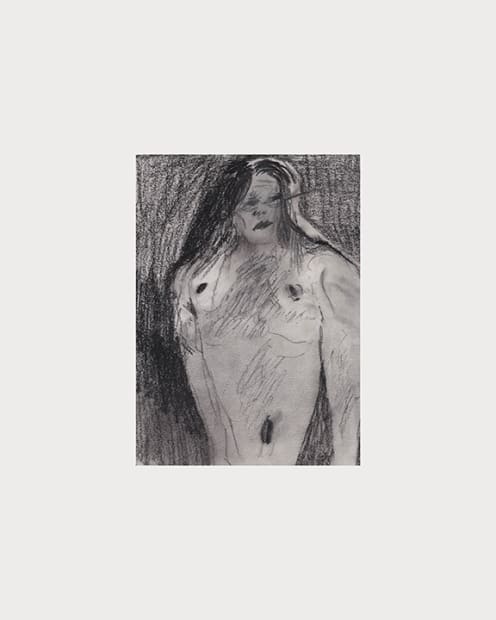-
SAM WOOD & AILSA OGDEN
IN CONVERSATION -
A garden in Tottenham – Brie, Beaujolais, and annoying flies.
SW: I need to get your drawing framed.
AO: Yes I’ll be interested to see what you do with it.
SW: Not sure what to do, I’ll speak to the framer this week.
AO: That cheese is a good idea for us, when you’re a littlehung over its just what you need.
SW: Right? Shoo fly. -

-

-

-
SW: You mean you feel you have to wind down to it?
AO: I find it difficult to get out of the rigidity of design in order to have the looseness to get into the drawings. Even then it’s a very specific mode when I can do it. When I get it right and I can do it it’s almost like I’m slightly dislodged from my own brain, I’m so much freer. However I think I need the design work as a break because making the drawings is so challenging to me, they’re so weird.
SW: Whenever I watch documentaries about painters, they are always asked how they feel about painting, the act of making a painting, do you enjoy your work, is it relaxing? And invariably they would answer that it is maddening, frustrating, upsetting often. I used to think, that’s mad you’re living your dream you’re making work every day how can you be unhappy or frustrated? But the more I do it the more I find I agree with them, that the work is about solving a kind of problem all the time and when you’re getting it its great, but when you can’t find it or worse, had it and than ruined it, it can really be very intense and stressful. Sometimes a brief is a relief because you already know the solution to the problem, you already know the requested outcome of the work.
-

-

-
SW: You set rules?
AO: Yes, in the sense that I want to try to capture something very specific, almost this oddness, and I chase it, throughout the course of a drawing session.
SW: A lot of your image sources are from magazines from a certain time period, Physique Pictorial for example, when you talk about setting rules is that based on the origin of the image or how you think you will realise what is there in the image texturally in the drawing?
AO: It’s how I am going to realise the Image on the page. There’s something raw about those particular images and I often can’t identify it specifically, but it is the compulsion to make the drawing from that specific image, from there I set an intention for the drawing at the outset and that makes it less stressful to realise.
I have always been interested classifieds, gay ephemera all of that. I was buying old magazines maybe as young as ten or eleven, going and finding them at car boots in Cumbria but they were few and far between, coming to London and finding a wealth them in markets was a revelation, even down to the plastic wrappings they come in, I have a thing for that. -

-

-


















